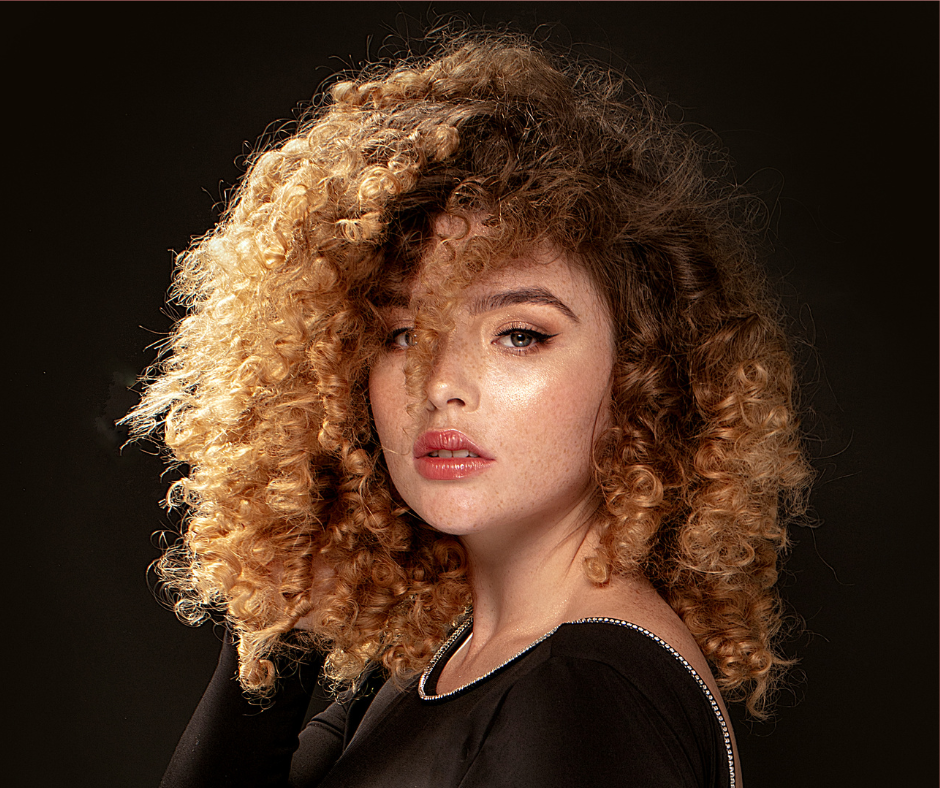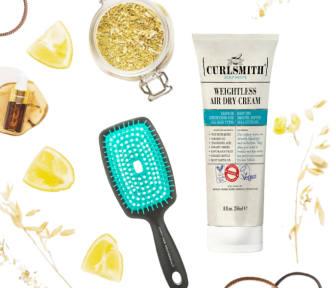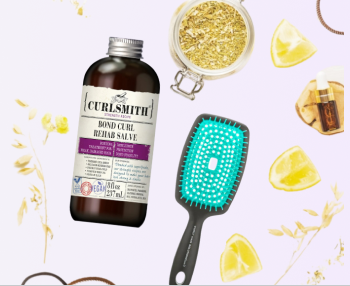Conditioning your hair is pretty important… why? It is probably the most important step in a routine for curly/wavy hair because it helps to:
- keep a thin film over the hair to protect it from tangling and frizzing
- provide flexibility and softness
- maintain the moisture and protein balance
I’ve mentioned this in the past, but this is a gentle reminder that even water soluble conditioners are intentionally formulated to not fully rinse out of your hair. There is always just a little left behind. The positively-charged ingredients (cationic and fatty alcohols) in that bottle will adhere to your negatively-charged hair to form a very thin film to protect your hair. These ingredients help to fill in the gaps and protect your hair from further damage.
A few examples of conditioners available from Curl Warehouse that you might want to consider using in your routine are the Innersense Pure Inspiration Daily Conditioner, the Mielle Organics Monongo Oil Protein-Free Hydrating Conditioner, or the Jessicurl Aloeba Daily Conditioner. All of these products are suitable for regular use.
 Let’s talk about how to condition your hair. I will focus here on rinse-out conditioner (not deep conditioner) to keep this topic simple but a lot of the same basics will apply for all conditioners.
Let’s talk about how to condition your hair. I will focus here on rinse-out conditioner (not deep conditioner) to keep this topic simple but a lot of the same basics will apply for all conditioners.
How to Condition Your Hair
Apply your conditioner of choice to your wet hair by gently gliding a bit of conditioner around a section of hair. Get it to all of your sections and then just give the conditioner a minute or two to start soaking into your hair. It’s a good practice to start at the bottom or each section to apply your conditioner as this is where it is needed the most. If you tend to have oily hair stop at the mid to top of the section (near your ears) and avoid the roots. If your hair is dry, take that conditioner all the way to the scalp.
After a few minutes, this is a good time to start detangling. Some will just gently glide their fingers through their hair, raking the product through. Others might start working in a section with a wide toothed comb, starting at the bottom to release any tangles. Lately more of us (including myself) are having good results using a brush. Yes, I know that isn’t approved if you strictly follow the Curly Girl / Curly Hair Method but if you are having trouble with knots this may be the best tool to assist.
(There are some great brushes out there and the Flexy Brush from Curl Keeper is super flexible and gentle. This brush can be used as a scalp massager to assist with your shampooing too.)
Take your time conditioning. It is okay to spend 10 minutes (or more) doing so, even if that means turning the shower off for a few minutes. Your hair is wet and in a fragile state so treat it like an expensive cashmere sweater while you detangle in small sections from the bottom up. If it isn’t going well, add a little more conditioner and water until it starts to feel slippery or seaweed-like, so you can continue with care.
Once you feel the nice gliding sensation on your fingers, your comb, or brush, you’ll notice that the hairs will be laying flat and smooth. You want that conditioner to coat every single strand of hair on your head.

The next technique you may want to try is called Squish to Condish, sometimes abbreviated to STC.
How to "Squish to Condish"
- Add a bit more water to your hair if needed (it should be quite wet) and start to gather a clump or two in your hands.
- Keep your fingers together so strands of hair don’t fall through and then start to pump your hair. It should make a sound like wet socks and some of the water/conditioner will drip out.
This technique will really enable the conditioner to be pushed into the hair giving you better, longer lasting results!
Again I would recommend you leave the conditioner on your hair for a few minutes before rinsing, even if you squish to condish.
Once you’ve finished conditioning you can:
1. Rinse it all out fully. This works best for fine, lower density hair that can easily get weighed down by product.
2. Rinse it out partially. It is up to you but a good rule of thumb is to watch the water being rinsed out and once it looks less watery/milky you can stop. This might take 15-30 seconds.
If you conditioned all the way to your scalp, be sure to focus on that area. Leftover conditioner on the scalp can cause itchiness or greasiness.
When you have your rinsing complete, you are ready to add your styling products.
So in summary, it is important to condition your hair. After cowashing your scalp, using a low poo or a clarifying shampoo, always reach for a good conditioner to complete your routine. This is especially important after clarifying as these shampoos contain strong cleansers. If you haven't tried it before, give the "squish to condish" technique a try to help your conditioner further coat and penetrate your hair.
References:
- The Meszita Muse: What's In Your Conditioner (https://themestizamuse.com/blog/whats-in-your-conditioner)
- Science-y Hair Blog: Conditioning Technique: Squish to Condish, How it Works (https://science-yhairblog.blogspot.com/2018/08/conditioning-technique-squish-to.html)








